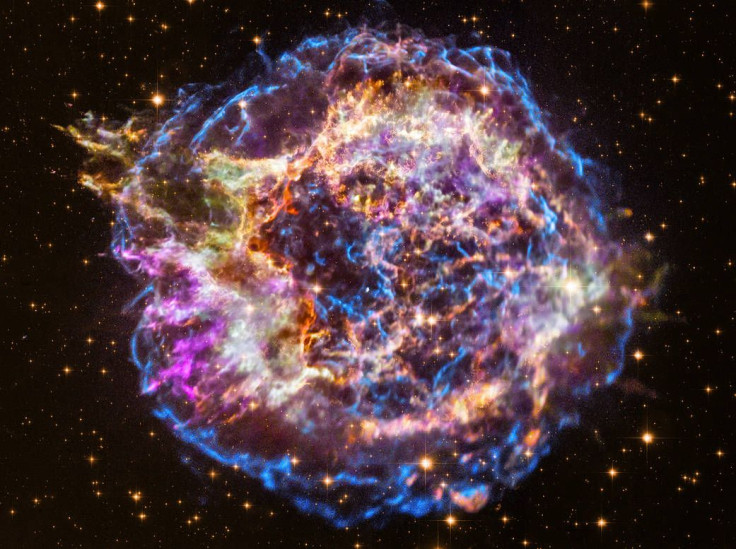NASA Photo Captures Stunning Supernova: Glowing Debris Of Massive Star Explosion [Watch]

NASA’s Chandra X-ray space telescope has captured the stunning evolution of a supernova remnant. Through an accompanying video, NASA showed the spectacular images of the stellar explosion as it changed through the years.
The supernova remnant has been identified by NASA as Cassiopeia A, also known as Cas A. Located about 11,000 light-years from Earth, NASA noted that Cas A began as an old star that eventually ran out of fuel. As this happened, the star collapsed on itself, triggering a supernova.
The explosion from the event produced shock waves that supercharged the stellar debris surrounding the star. This caused the nearby region to glow brightly in various forms of light including x-ray.
Cas A’s bright display was first captured by the Chandra space telescope shortly after its launch on July 23, 1999. Since then, Chandra has been directing its gaze towards the region to document the changes in its appearance.
In a new video released by NASA, Cas A can be seen as it evolved from 2000 to 2013.
“The blue, outer region of Cas A shows the expanding blast wave of the explosion,” NASA explained in a statement. “The blast wave is composed of shock waves, similar to the sonic booms generated by a supersonic aircraft.”
“As the blast wave travels outwards at speeds of about 11 million miles per hour, it encounters surrounding material and slows down, generating a second shock wave – called a reverse shock – that travels backwards, similar to how a traffic jam travels backwards from the scene of an accident on a highway,” the agency continued.
According to astronomers, the reverse shocks travel at about 5 to 9 million miles per hour. These form as the blast waves slow down after encountering clumps of cosmic material or debris surrounding the origin of the supernova.
NASA said that it plans to continue capturing images of Cas A to keep track of the changes in its appearance. Through this, the agency will be able to accurately document how a supernova can affect its surrounding region. It can also help the agency understand how a stellar explosion evolves over time.
© Copyright IBTimes 2025. All rights reserved.





















